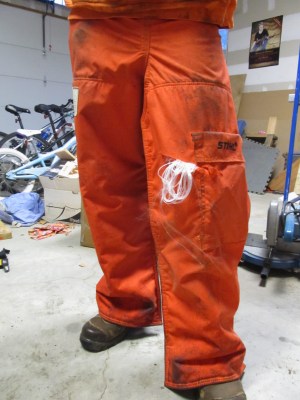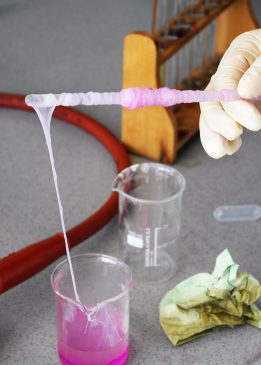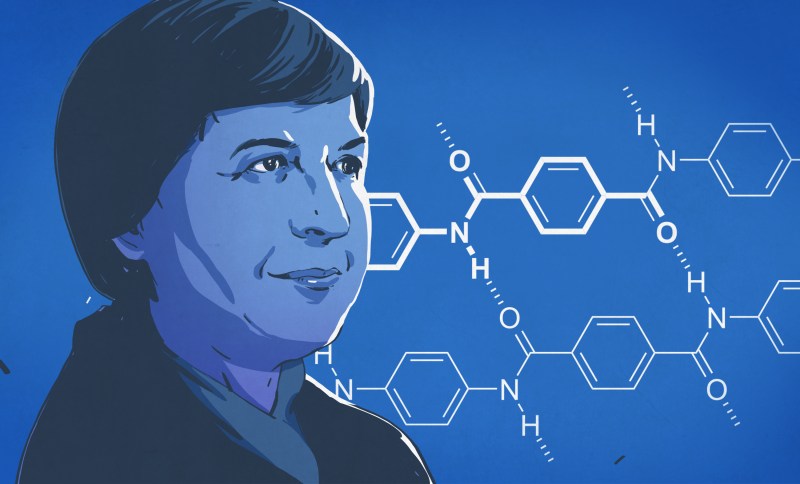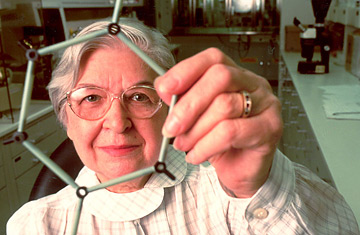Like most accidents, it happened in an instant that seemed to last an eternity. I had been felling trees for firewood all afternoon, and in the waning light of a cold November day, I was getting ready to call it quits.

There was one tiny little white pine sapling left that I wanted to clear, no thicker than my arm. I walked over with my Stihl MS-290, with a brand new, razor sharp chain. I didn’t take this sapling seriously — my first mistake — and cut right through it rather than notching it. The tree fell safely, and I stood up with both hands on the saw. Somehow I lost my footing, swiveled, and struck my left knee hard with the still-running chainsaw. It kicked my knee back so hard that it knocked me to the ground.
In another world, that would likely have a been a fatal injury. I was alone, far from the house, and I would have had mere minutes to improvise a tourniquet before bleeding out. But as fate would have it, I was protected by my chainsaw chaps, full of long strands of the synthetic fiber Kevlar.
The chain ripped open the chaps, pulled the ultra-strong fibers out, and instantly jammed the saw. I walked away feeling very stupid, very lucky, and with not a scratch on me. Although I didn’t realize it at the time, I owed my life to Stephanie Kwolek.
Fashionably Scientific
Stephanie Kwolek’s life story is a study in contrasts. Born in 1923 in a rural town outside of Pittsburgh, Stephanie enjoyed a happy childhood with strong yet gentle influences from loving parents, both Polish immigrants. Her mother had a love of fashion, and Stephanie enjoyed watching her sew dresses. She imitated her mother at first with paper dolls, and later took up sewing herself, making many of her own clothes. Her interest in fashion stayed with her, to the point that she would seriously consider a career as a designer.

Her father was an amateur naturalist who would take her on long walks in the Pennsylvania woods, observing the flora and the fauna and teaching Stephanie how to catalog and classify the natural world. Sadly, her father died when she was only 10, but the interest in the natural world he inspired in her never left. She excelled in school, especially her math and science classes, doing “much more reading than was intended for someone of my years,” as she put it.
After graduating high school, she enrolled in the Carnegie Institute of Technology, now known as Carnegie-Mellon University, in Pittsburgh. It was 1942, and even though the world was tearing itself to pieces, her timing would prove to be propitious. Stephanie enrolled in the chemistry program, and unlike so many women in science at that time, she experienced little of the usual “old boy’s club” exclusion. Perhaps thanks to the fact that so many men of her generation were absent from the classrooms (but more likely due to how bright she was) Stephanie was not only allowed and encouraged to study chemistry alongside the men, she was actively included in their groups. In her first year at Carnegie, she was even appointed to a panel by the chemistry faculty and encouraged to present her work.
Temporary Employment
As her undergraduate years were wrapping up, Stephanie was still on the fence about what to do with herself. A career in fashion design still intrigued her, and she also toyed with the idea of becoming a teacher. But she thought the best use of her new chemistry degree would be a career in medicine. Then as now, medical school is an expensive endeavor, so to save up for that, Stephanie took a temporary job in 1946 at the DuPont Company. She worked in the Polymer Chemistry division in Buffalo, New York.

Stephanie’s 20s quickly became her 40s, and in 1965 her group was tasked with finding a new, lightweight substitute for steel belting in automobile tires, on fears of a looming oil shortage and in anticipation of a market for lighter tires. While working on reactions with terephthalates and benzamides, Stephanie kept coming up with a strange side product — a runny, opalescent solution with the color of buttermilk. Interesting polymers are almost universally viscous, and her colleagues advised her to toss the stuff.
Stephanie found the substance intriguing and didn’t toss it away, instead asking the lab’s technician to run it through the spinneret, a device for turning polymer solutions into fibers. He declined, not wanting to clog his instrument with what he thought was a solution filled with flocculant particles. Stephanie persisted, showing him that the solution would pass through a filter without leaving any residue; she would later learn that this was because she had created the world’s first liquid crystal polymer, which accounted for the solution’s opalescence. The technician relented, and the world’s first aromatic polyamide fibers were spun.
Stephanie quickly characterized the fibers, finding them immensely strong and stiff. The tensile strength-to-weight ratio was five times greater than steel, and coupled with its thermal properties, including excellent performance under cryogenic conditions, the new fiber was clearly going to be big. DuPont management was quick to commercialize the product, dubbing it Kevlar.
A Legacy of Saved Lives
Stephanie’s invention hit the market in the early 1970s, and while Kevlar, its derivatives, and associated aramid fibers like the fireproof fabric Nomex have been incorporated into thousands of industrial, military, and consumer products, her involvement with the fiber largely ended once she filed her patent.
She continued her work on polymers for another two decades. In 1995 she would win the Lavoisier Medal for Technical Achievement, still the only woman to have done so. She was inducted into the National Inventors Hall of Fame that year too, and into the National Women’s Hall of Fame in 2003. She always contended, though, that the true reward of her labors was the lives saved by her invention.
Stephanie worked for DuPont for 40 years, retiring in 1986. She remained active in science and education for many years after that, and she died in 2014, about eight months before her invention kept me from chopping off my leg. Had I only known, it would have been nice to give her a call and let her know how much I appreciate her work.

















“the world’s first aromatic polyamide fibers ”
From which we get the name Aramid
https://en.wikipedia.org/wiki/Aramid
And Kevlar is often a component of carbon fiber (fibre -Jenny) composites.
No, NOMEX was invented before Kevlar.
Great article. I had no idea the history of Kevlar. Interesting to me is that like fiber glass and carbon fiber… Kevlar and other fabrics like Cordura, and even combinations of, can use a polymer resin to form pretty much what we want using molding, vacuum forming and/or other simpler methods.
I want to say some skins are carbon fiber layered with aluminum also with a ferro-organic coating. Even more interesting is some components can use the foam used (if used) as a mold in a more advanced way to improve shielding characteristics at least I’d guess shifting up absorbance into the higher frequencies unless maybe a higher magnetic permeability material: http://pubs.rsc.org/en/content/articlelanding/2014/ra/c4ra01731e#!divAbstract and https://en.wikipedia.org/wiki/Radiation-absorbent_material
Aramid and Kevlar are interesting. I bought a set of used Airman Aramid blend fire resistant pants (trousers) and a long sleeve shirt for on the farm and out in the field as looks like when welding or working with fire will be safe and cooler to wear over the Climacool long underwear. Plus there are a bunch of pockets for storage that seem handy. I grew up with Kevlar sleeves and even had a pair with a thumb hole for use when sledding to keep the snow off my wrists since they wouldn’t freeze up as bad as cotton socks.
Stephanie’s invention was wonderful. However, there is now a SUPERIOR technology to Kevlar involving Goats and Spiders. Watch this CNN news story from 2011:
https://www.youtube.com/watch?v=Q6S4fMOxuyE
You are “kidding” (as in goats) me!
B^)
Ren – No. Watch the CNN video. They actually got goats to produce spider webs from their milk. The FBI (et al) uses these spider-web vests for field agents as it is light weight, thin, undetectable, and can stop a bullet. Of course you need a ceramic ballistic shield under it to stop broken bones. But it will stop a .22 caliber without the shield.
It’s cheaper to use goats as silk-web-orb spiders need to spin enough silk for 1 vest takes about a million of them. However one goat can produce enough silk for a very small vest. This silk ballistic shield was invented in ancient China to stop arrow head penetration. So it’s not new.
I can’t believe Stephanie did this in 1964 about the same time Theodore Maiman’s amazing invention at Hughes Aircraft. I used to live right across the river from DuPont and they were always inventing something amazing (or blowing something up).
https://i.pinimg.com/originals/d5/60/be/d560bea585cb1489021d4fda905c24fe.jpg
I did watch the video, and enjoyed, but I like making a pun (kidding) even more!
I know Ren. That’s why you (and others) are some of my “special” (i.e. favorite) HaD cyber-buds. At least you never called me a “tin-foil hat” like one wholly uniformed HaD did recently! My hat is made of Kevlar AND spider webs! :-D
P.S. one knuckle head here on HaD said I was the worst person on HaD for making fun of a guy’s eye brows! Come on you’d have to see his uni-brow eye brows! You know that LASER genius hacker here on HaD. :-P
sonofthunderboanerges, et.al.: What ever became of the ceramic scale like armor design? I thought around 2000 that those systems were superior and preferred by contractors overseas. Would be interesting to see what other improvements can be made with different materials to re-use and maintain mobility as well as increase performance requirements of the armor systems.
James Analytic – Not sure but I think US soldiers in SW Asia used the Xylon ceramic inserts for Kevlar vests. I think they were defective as they shattered on impact most of the time. What is used today may be classified but I am not sure.
sonfothunderboaneges: Yeah, I had to double check since I haven’t looked into since around 2001 maybe other than some ideas I had documented somewhere to improve the design even more in regards to shapes and materials used. This Dragon Skin armor was one of my Dad’s concepts he liked and I think company he thought I could look into that I might have more impact to develop and improve. Looking back… makes sense… full of controversy and of course the spirit led me to go into the more controversial like you noted post American Made apocalypse Roman arena, where the Dragon Skin seems more like politics from this wiki reading: https://en.wikipedia.org/wiki/Dragon_Skin
Interesting the company is called Pinnacle Armor and I was a few days back wondering about my old Pinnacle PC Video TV tuner card and seems like the newest one was a USB tuner to make a spectrum analyzer from that I must have left at the other house. Yeah, looks like hostile take over contractor politics to me also. Poor Kevlar.
the product name is “Dragon skin” and the manufacturer is Pinnacle Armor…should still be available on the market, abeit quite pricey…
OH KIDding! and goats! Now I get it. Waaaay over my head… funny guy…
Wonder what the bio-integration of the material is like if transplanted over the long term if not rejected? Seems like a bio-hacking area of opportunity for certain professions. Totally forgot about the goat milk silk. Great call.
I think the Swedish girl in my CNN video above is a bit daft. You can’t graft that bullet-proof skin into our skin even with Immunosuppressive drugs. Just too unrealistic.Even the American scientist in the video called b.s. on her idea. If you want something like that you’ll need a Tony Stark TALOS suit
https://www.youtube.com/watch?v=xIYHVE1We54
Sounds like they grew the dermis and epidermis skin cells from stem cells onto the ballistic matrix. I dunno… figure no need for immune suppressants since the donor cells can be used kind of like burn treatments where the pluripotent skin cells are extracted from other parts of the body and shotgun like blasted onto the burn area. https://renovacareinc.com/2016/06/new-video-spray-stem-cells-rapidly-heal-wounded-state-trooper-using-renovacare-skingun/
I fore see more an integration, versus rejected issue, more like eaten as food like bio-absorption issues when might not want… though may be interesting for job periods?
A heroine with remarkable contribution we all recognize the value of, yet I do not recall hearing her name before.
Double bonus points plus well written! TY.
Body armour can’t even protect you from an English longbow, https://www.youtube.com/watch?v=u6Xrn5DNwCg that is +1000 year old tech! There is also a video of the US Army testing them, same results or even more penetration. They were pretty serious about finding something that did actually protect people, because Kevlar is useless for body armor and just makes cowards braver rather than safer. Mind you there is also a pyrotechnic mod to arrows that will even penetrate 2 cm of steel so nothing short of thick ceramic armor will protect you from a person with the right sort of bow and arrow, over a range of 300 meters. At that range and with almost no sound your people just start dropping with only a vague indication of where the attacker is. Interestingly the military cadets in my area do actually practice with bows.
I’m pretty good with a recurve. I once shot an arrow into the back of another like William Tell or Robin Hood. I was shocked too. The whole idea of silk vests stopping arrows is to stop deep penetration. You still get a nasty bruise and maybe even pierced skin. But the ancient Chinese battlefield-medic could patch you up better than if you had one sticking all the way through you. However, I think compounds and cross are especially lethal with any kind of ballistic shield. Those things were/are monsters. I could never pull one or set it. You have to be built like Governor Arnold S. (R-CA) to pull one.
https://images-na.ssl-images-amazon.com/images/M/MV5BMzlhMzczMzMtYzJiOS00M2I3LWJjYjktZjdmYTg0YTkzZDg3XkEyXkFqcGdeQXVyMDEwMjgxNg@@._V1_.jpg
Interesting is the slingshots with whisker biscuits, and the rubber cone ones even with, to shoot arrows with. There’s even Carbon Express Aramid-KV 350 Kevlar layered arrows on the market.
An interesting, but meaningless demonstration. Kevlar is proven effective protection from the weapons likely to be used against law enforcement, and military personnel today. Hell armor is just as old warfare,so what’s the point of insinuating those protected by armor today cowards? I find old tech interesting, but archery lost out to single shot and repeating firearms long ago, so I don’t get too romantic over old tech.
yes, but you never know, the longbow might make a comeback in some post-apocalypse scenario.
“Once more unto the breach, dear friends, once more; Or close the wall up with our English dead!”
Ever notice the stealth weapon in some games is a …bow?
Bows will never be obsolete in a scarcity situation as you can make your own arrows. Some regimes don’t allow any type of weapon for the average joe so if your life depended on it then it is a reliable choice for defense.
Seems the DARPA suit is going to have to be implemented with mirrors as we were talking in our last Robotics Club meeting that systems like the LaWS or other DEW’s are going to be the future more-so with all sorts of issues with reflections and diffusion also.
I feel more is needed to protect the vulnerable easier to play along types that can get cult programmed into shooting people and armed robbing with ES/TS EW DEW’s that don’t need to, so the primate predatory inbreeds or invalids that are the most dangerous traits or groomed by them and can’t correct or be prevented can be quarantined until eradicated unless they’re GMO’d I’m guessing if the time and resources will be focused on genetically modifying doing so.
I’m guessing the deadly force operators are better suited to stay focused on that type of operation where the leadership needs to be targeted the most to assure quality iteration through the laws to determine the most combined law violators that victimize others… especially the more vulnerable intentionally and premeditated. So body armor, flame retardant/resistant and reflection materials need to be developed or designed from existing materials like Kevlar and Aramid more so easier to dispatch when required to do so when validated as a violator that meets that qualification.
Trafficking people is way brain damaging and cult programming the U.S. Jurisdiction for sure to create subhuman degenerate cultures that are no way required when there is potential to breed better men and women like Stephanie Kwolek that contribute to society… even if others are jealous and insecure. Animals that are predators are aloud to be killed. Creepy the liberals wanting to make everyone defenseless to the point of neutered, suicidal and queer invalid like slaves for recreational profiteering or some seems like poaching even if you don’t “fit in” with their pedo groomed.
*soft* body armor! You are NOT, I repeat NOT going to be able to drive an arrow through a ceramic plate :P
Just don’t try it with any of my wife’s pre-war Noritake plates!
B^)
How sure are we about the caption for her “8th Grade Graduation Photo”? That’s got to be one of the oldest looking 8th graders in the history of middle school students. She looks like she could be teaching a class of 8th graders.
Some breeds or mixes of breeds girls are big… seems some I’ve worked with straight from Europe are for sure. I think the food is better over there or maybe hormones were still in the food and/or bulls/bucks were slaughtered for meat back then?
That’s a typo Dan made. That picture is from a COLLEGE graduation. Here in America no one graduates from 8th grade in our public grade schools. And we don’t have grades in our colleges either. She is obviously 23 that photo and that’s her degree for chemistry in her hand. She was born in 1923. It was 1946, and she earned a Bachelor of Science degree with a major in chemistry from Margaret Morrison Carnegie College of Carnegie Mellon University in Pittsburgh PA not Univ of Houston. You need to fix that Dan…
https://en.wikipedia.org/wiki/Stephanie_Kwolek#Early_life_and_education
I think the problem is that the source URL on the web page at the University of Houston is literally “Stephanie Kwolek eighth grade graduation picture.jpg”
Some rural schools DO still have 8th grade graduations. They are a holdover tradition from earlier times.
Not sure why that should matter. Would be poor practice on Dan’s part to speculate, and label the photo anything other than attributed source’s file name for the photo.
Lemming.
Ahh DuPont. Like google’s warm n fuzzy take on aniline dyes the other day, reading any of their achievements makes me wonder if they’ll ever be able to match the wonders of tetraethylead, beta naphthalene and all of the other goodies they dumped & spewed across the old Chambers Works facility in NJ. Tho the Savannah River project & Hanford were also true wonders of the ages.
Don’t forget CFCs! The effects of those are going to be around for a while :D
Hell of an introduction. Thank you!
Not to get political, but I’ve really appreciated these “women of science and engineering” articles. I’ve always felt bad for the underdogs of our art (regardless of sex) and I really appreciate HaD taking some time to highlight them. I remember when I learned about Oliver Heaviside, then talked to my fellow students are and realized how little they know of the Giants upon which we stand. Keep up the good work, HaD.
the history of science is strewn with underdogs, and the robbers who steal their work and take the credit.
> Stephanie’s 20s quickly became her 40s
Whoops, gotta be careful working with those chemicals…